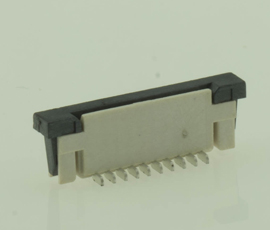1. Overseas Sales Department
Eva Manager
E-mail:eva@yccnt.com
Mob:+86-17751228540
What’s App:17751228540
Vicky Zhang
vicky.zhang@kscnt.com
Mob:+86-18962449735
Skype:+86-18962449735
2. Techinical Support
Max Gu Manager
E-mail: max.gu@yccnt.com
Tel:+86-512-55172933-8007
Mob: + 86-13862390046
The basic performance of FPC connectors can be divided into three categories: mechanical performance, electrical performance and environmental performance.
1. Mechanical properties With regard to the connection function, insertion and removal forces are important mechanical properties. Plug into and out of force into the pull-out force (pull-out force also known as the separation force), the two requirements are different. There is a maximum insertion force and a minimum separation force in the relevant standard, which indicates that the insertion force is small from the point of view of use (thus, there is a structure with a low insertion force LIF and a non-insertion force ZIF) and the separation force is too small, It will affect the reliability of the contact.
Another important mechanical property is the mechanical life of the connector. Mechanical life is actually a durability (durability), in the national standard GB5095 called it mechanical operation. It is a plug and pull out as a cycle, in order to plug the cycle after the connector can normally complete its connection function (such as contact resistance) as a basis for judging.
FPC connector insertion force and mechanical life and contact structure (positive pressure size) Contact quality of the coating (sliding friction coefficient) and the contact arrangement of dimensional accuracy (alignment) on.
2. Electrical performance
Electrical properties include contact resistance, insulation resistance, current and electric strength
① contact resistance: high-quality electrical connector should have a low and stable contact resistance. The contact resistance of the connector varies from a few milliohms to tens of milliohms.
② Insulation resistance: The measure of the electrical connector contacts and the contact between the shell and the insulation performance of indicators, the order of magnitude of several hundred megohms to several thousand megohms.
③ Dielectric strength or withstand voltage: The ability to characterize the rated test voltage between the contacts of a connector or between a contact and a case depends on the clearance between the contacts (ie, the distance between contacts plus the creepage distance) and the connector Insulation material used.
Current: limited by the power connector and its terminated wire.
Other electrical properties as well as electromagnetic interference leakage attenuation is to evaluate the electromagnetic interference shielding effect of the connector, the general test in the frequency range of 100MHz ~ 10GHz.
For RF coaxial connectors, there are also electrical characteristics such as characteristic impedance, insertion loss, reflection coefficient and voltage standing wave ratio (VSWR). Due to the development of digital technology, in order to connect and transmit high-speed digital pulse signals, a new type of connector has emerged, namely a high-speed signal connector. Correspondingly, in addition to the characteristic impedance, some new electrical indexes Such as crosstalk, transmission delay, skew, and the like.
3. Environmental performance
Common environmental performance, including temperature, humidity, salt spray corrosion and so on.
